Headington, Oxfordshire
Up to 1834
Prior to the 1834 Act, Headington had a parish workhouse at Titup, in a former inn situated on what is now Old Road — formerly the main road to London.
After 1834
Headington Poor Law Union was formed on 15th September 1835. Headington was not an obvious centre for a new union. Its creation resulted from the Poor Law Commissioners' failure to find a satisfactory allocation of parishes to the adjacent Thame and Bicester unions. The City of Oxford Incorporation, created by a Local Act in 1771 and whose status left it untouched by the 1834 Act, provided a solution to the problem. The Incorporation's membership comprised only eleven of Oxford's fourteen parishes, omitting St John the Baptist at its centre, and St Giles and St Clements at its perimeter. The Incorporation was approached by the PLC's Assistant Commissioner Edward Gulson to discuss the possibility of its conversion to a Poor Law Union which would include the additional three parishes. The Incorporation decided to retain its Local Act status and take in St John the Baptist, which lay at its centre, but not to add the outlying parishes of St Giles and St Clements. The apparent reason for this was that the Incorporation had a contract with the City for its paupers to clean all of Oxford's streets, including those of its non-member parishes, for which it received a net annual income of £600. This revenue would be lost if the Incorporation took on St Giles and St Clements. These parishes therefore formed the basis of the new union based on Headington, chosen as being near to the Oxford parishes where a large proportion of its population resided.
The union's operation was overseen by an elected Board of Guardians, 25 in number, representing its 22 constituent parishes as listed below (figures in brackets indicate numbers of Guardians if more than one):
Oxfordshire:
Beckley, Chippinghurst, Cowley, Cuddesdon, Denton, Elsfield, Forrest Hill, Garsington, Headington (2), Holton, Horspath, Iffley and Hockmoor, Marston, Oxford St Clements (2), Oxford St Giles (2), Shotover, Stanton St John, Stowood, Studley and Horton, Wheatley, Woodeaton.
Later Additions: Oxford St John the Baptist (from 1836), Littlemore (from 1879), Cowley St John (from 1894).
Buckinghamshire:
Studley and Horton
The population falling within the Union at the 1831 census had been 12,055 with parishes ranging in size from Stowood (population 26) to Oxford St Giles (2,855). The average annual poor-rate expenditure for the period 1833-35 had been £7,654 or 12s.8d. per head of the population.
The new workhouse was built 1836-7 to a design by George Wilkinson of Witney, on a seven-and-a-half acre site on the south side of the London Road — a little to the west of the Headington Quarries. It was built from local stone at a cost of around £3,300 and was designed to accommodate 250 people. Its location and layout can be seen on the 1921 map below.
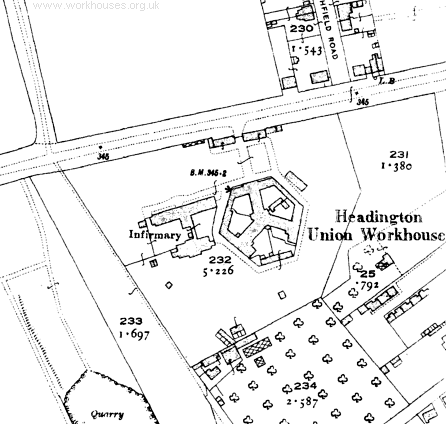
Headington workhouse site, 1921.
Wilkinson designed several other workhouses in the area including Chipping Norton and Witney. However, the Headington layout is much more typical of the designs of Wilkinson's rival, Sampson Kempthorne, who was the architect of the nearby workhouse at Abingdon. The hexagonal design was one of the model workhouse plans produced by Kempthorne for the Poor Law Commissioners. It comprised an entrance block (at the north, facing towards the London Road) behind which lay three wings radiating from a central hub in a Y formation. The wings provided segregated accommodation for the different classes of inmate (male/female, infirm/able-bodied, children etc.) with areas between them divided up into separate exercise yards. The supervisory hub contained the master's quarters and provided views over the yards in all directions.
Originally, the workhouse infirmary formed the southern side of its hexagonal perimeter. However, a separate infirmary was subsequently erected at the west of the workhouse. The single-storey blocks flanking the entrance, presumably casual wards for vagrants, were another later addition.
According to Edna Mason (1989), there was a fair turnover of staff in the early years of the institution. Things looked set to change with the appointment of John Smith as workhouse master in 1848. Under his regime, the gardens were developed with the men cultivating vegetables and the women working on the rockery. Fruit trees were also planted. His period of office came to an abrupt end when his wife, the matron, discovered him in compromising circumstances with a former school-mistress whom she had dismissed two years earlier.
From around 1904, to avoid the stigma of having been born in a workhouse, the birth certificates of children born at Headington recorded its address simply as "Hill House, London Road, Headington".
The former Liberal MP for Oxford, Frank Gray, disguised himself as a tramp and made undercover visits to the casual wards of several Oxfordshire workhouses including Headington. Conditions in the Headington "spike" were dire, unlike its much more well-appointed neighbour two miles away in Oxford. However, Headington was still popular with tramps because there was virtually no supervision:
The ward is a narrow building, perhaps eleven feet wide and eighteen yards long, four feet of the width being passageway till this stone passage becomes sleeping accommodation under pressure for space. On the right, as you enter, is a sloping platform, starting nine inches from the stone floor and rising to a height of eighteen inches against the wall. This platform is broken up by nine-inch upright boards, fourteen inches apart.
It looks in the gloom like a row of coffins, and each tramp who is quick enough to get in claims one. He thinks himself lucky in getting it. Every one else sleeps on the floor, under this erection or in the passageway.
At the end of this ward — a cold outbuilding — and only partly partitioned off, is a foul lavatory and bath, unused and unusable for washing. This was all we were given at Headington, however great or small the number requiring accommodation.
Nobody has to sleep under the raised boards to-night, in the dirty, high-windowed, elongated cell, with the almost uncovered combination of bath and cesspool at the end. The young tramp and I sleep in our clothes, for there is neither search, baths, nor handing over of raiment in this hell, where all men are at last equal.
In society we all believe we have our inferiors, if not our superiors. This first belief fades in the Headington casual ward. Reproduce this casual ward in any gaol in England and the nation would cry "Shame!"
There is one candle to light the fifteen yards of humanity, and two Irish tramps arriving late and in drink quarrel with the rest of us locked in this cell as to the exact position where this candle shall stand. Why do we quarrel in this black hole — in this horror of filth and indecency ? Why, in truth, do we want this candle at all to cast shadows in this hole of shame?
Morning has come; the dirt-laden grills of our cell say so. There is a shout from the porter for the production of unemployment cards by those who can produce them. There is not one, for none of us here is a genuine worker. Had we cards we should produce them, for by doing so we gain our immediate release, without task or work. Like the rest I have no card, so I perforce do three hours' sawing.
The task is over. I am again on the "open road," on the outskirts of Oxford, and less than two miles from the Oxford workhouse, where I intend to stay to-night. I have passed through Headington Union. I might have passed in an advanced stage of carrying smallpox, at death's door, or mad, and yet have remained uncared for and unnoticed. (Gray, 1931)
After the official end of the workhouse system in 1930, Headington workhouse became London Road Hospital. In its latter years, the workhouse it operated as an old people's home under the name of The Laurels.
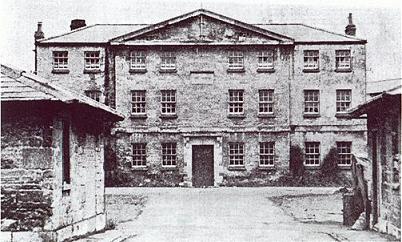
The Laurels (1960s?)
Courtesy of Newsquest (Oxfordshire) Ltd.
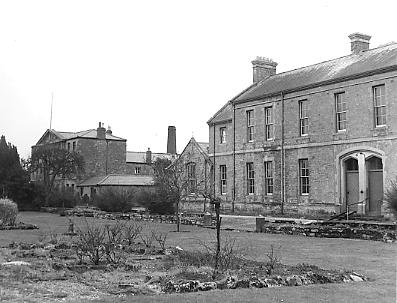
The Laurels - north-west aspect from London Road
© Oxfordshire Photographic Archive.
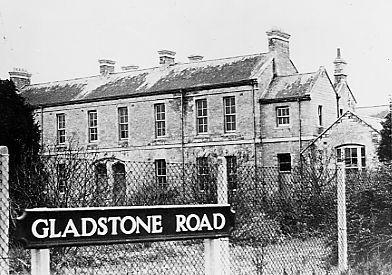
The Laurels - infirmary block (mid 1960s?)
© Oxfordshire Photographic Archive.
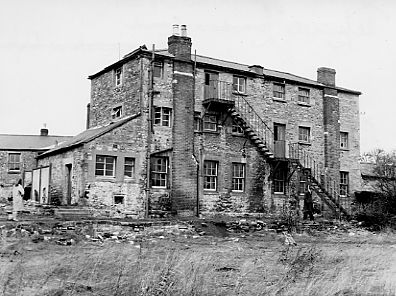
The Laurels - from the south-west
© Oxfordshire Photographic Archive.
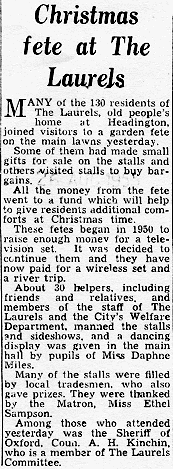
A flavour of life in The Laurels is provided by press-cuttings of the regular social events that took place there in the 1940s and 50s.
Report of a 1950s fete at The Laurels
Courtesy of Newsquest (Oxfordshire) Ltd.
The home was eventually closed in 1966 and demolished in 1968 to make way for a housing development. All that now remains is a solitary pillar and section of the old boundary wall at the north-east corner or the site.
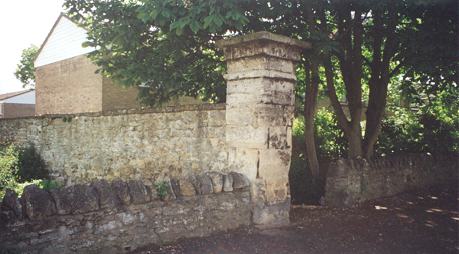
Headington remnants of workhouse boundary wall.
© Peter Higginbotham.
Staff
Inmates
Records
Note: many repositories impose a closure period of up to 100 years for records identifying individuals. Before travelling a long distance, always check that the records you want to consult will be available.
- Oxfordshire History Centre, St Luke's Church, Temple Road, Cowley, Oxford OX4 2EX. Limited holdings include Guardians' minutes (1841-1927, with gaps); etc.
Bibliography
- Simpson, NT The Headington Union Minute Book (unpublished thesis, Centre for Oxfordshire Studies)
- Bloxham, C & Shatford S 1996. Changing Faces of Headington, 1996, Robert Boyd Publications.
- Gray, Frank (1931) The Tramp (London: Dent)
- Mason, Edna. 1989. Headington Union(in Oxfordshire Family Historian, 5, 3,)
- Fenby, Charles. The Other Oxford, 1970. Lund-Humphries.
- Byung Khun Song (1999) Continuity and Change in English Rural Society: The Formation of Poor Law Unions in Oxfordshire in The English Historical Review, 114, No. 456. 314-338.
Links
- Oxfordshire History Centre, St Luke's Church, Temple Road, Cowley, Oxford OX4 2EX.
- Headington workhouse page by Stephanie Jenkins
Unless otherwise indicated, this page () is copyright Peter Higginbotham. Contents may not be reproduced without permission.


